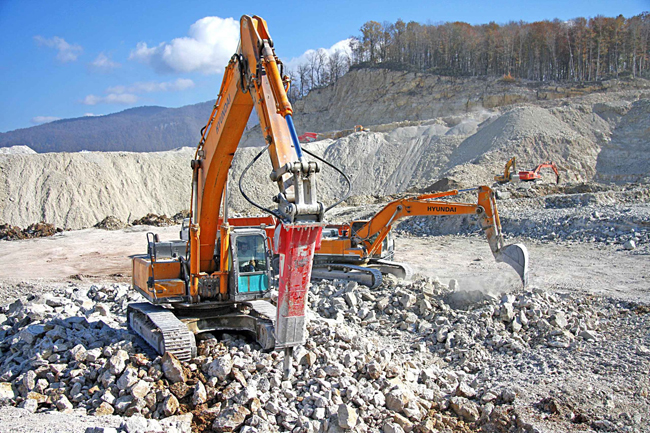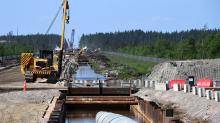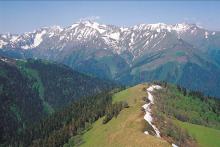
Investment projects that had been suspended by Russian aggregates producers due to the effects of the Ukrainian crisis are now being implemented. Eugene Gerden reports.
The Russian aggregates industry is developing steadily, which is reflected in the growth of aggregates demand from the major consuming industries.
Investment projects, many of which were suspended due to the Ukrainian crisis and its consequences for the country, are now being implemented according to recent statements by some of Russia’s leading producers and senior officials of the Russian Ministry of Industry and Trade.
An example is Lafarge Nerudny Materials and Beton, two Russian subsidiary of France-based
Currently Lafarge Nerudny Materials operates a large-scale facility for the production of crushed stone in Russia, which is located in the village of Derevyanka in the Karelia region in north-west Russia. Karelia, along with St. Petersburg, is one of the centres of aggregates production in Russia.
According to statements by the director general of Lafarge Nerudny Materials Maxim Goncharov, production will be mainly increased at the company’s Golodai Gora gabbro-diabase quarry.
Goncharov said the company hopes for high sales of future products, thanks to a high demand for them among Russian construction and road-building companies from Moscow, St. Petersburg, Nizhny Novgorod and other regions of Russia.
Last year, the company produced about 2 million m2 of crushed stone at Golodai Gora, 123.5% up on the 2016 figure. It is planned to further increase production this year.
According to data, Lafarge Nerudny Materials and Beton produced 0.4 mn m3 of crushed stone in the first four months of the current year, a 145% increase on the same period in 2017.
The total area of the field is 131.97 hectares, and its structure is comprised of densely-mined igneous gabbro-diabase rocks. The volume of reserves is 73,194m3.
Maxim Goncharov comments: “We do not see any problems with product sales for the next two to three years. Everything we produce is immediately purchased by our customers. However, there is a restriction on loading volumes on our railway line. Its capacity does not allow us to increase shipments, so we also have to use water transport.”
In an interview with the Vedomosti business paper, LafargeHolcim Russia director general Guillermo Brusco said the financial crisis in Russia has led to the optimisation of the company’s local aggregates business.
Brusco added that rapid development in the Russian aggregates industry is being prevented by serious market obstacles, the biggest of which is lack of access among producers to cheap loans. The majority of loans are provided to them at very high interest rates.
Brusco comments: “Since 2011, we have been intensively upgrading our production facilities in Russia. Total volume of investments since that time has amounted to €1.3billion. However, it is important to remember that we invested in production before devaluation of the rouble in 2014 and a sharp decline in the Russian market. Therefore, from a financial point of view, we are not quite happy with the results so far and have therefore taken a number of measures. We are reducing costs and paying more attention to financial discipline. Over the past 10-11 months, prices for our products have risen. At the same time in the next two to three years, we expect increased demand.”
In the case of Lafarge’s Karelian crushed stone project, its implementation is personally controlled by the governor of Karelia, Artur Parfenchikov, who has promised Lafarge that he will provide all the necessary support for the project and resolve all the transport issues.
Transport has become one of the most pressing problems for the Russian aggregates industry in recent years. This is mainly due to the lack of required types of transport, particularly rolling stock for moving aggregates around Russia.
Amid the ever-growing volumes of container cargo traffic in the country, the majority of Russian transport companies operating rolling stock prefer to transport container cargo instead of bulk cargoes as the former is usually more profitable for them.
This, in turn, leads either to a lack of rolling stock for aggregates transportation in Russia or its provision to producers at rates that are two to three times higher than average market rates for the transport of such types of cargo.
The current situation with aggregates transportation in Russia has attracted the interest of local regulators. Earlier this year the Russian Federal Antimonopoly Service (FAS) conducted several investigations regarding suspicions of price fixing among leading local railway operators for the transport of aggregates.
In the meantime, in addition to LafargeHolcim, other leading Russian aggregates producers have also announced plans to significantly increase production volumes this year, including increased exports abroad.
Due to the devaluation of the rouble, exports of aggregates outside Russia in recent years have become more profitable for local producers than supplying the domestic market. However, high transportation costs continue to be one of the major obstacles preventing more exports.
To solve this problem, some leading Russian aggregates producers and foreign companies operating in the local market have recently appealed to the national government to provide subsidies for the regular supply of domestic aggregates to foreign markets. A final decision on this issue is expected to be taken before the end of this year.
In the meantime, planned increases in exports have forced many major Russian aggregates producers to consider increasing their production levels.
As part of these plans, producers are proposing more active exploration of new aggregates fields and further development of already existing fields. This mostly applies to crushed stone and gravel fields, the current number of which is relatively small in Russia. According to data from the Russian Ministry of Industry and Trade, the majority of Russia’s existing crushed stone and gravel fields were discovered as far back as the Soviet era.
It is planned that the increase in production will be achieved through the improvement of technical levels of Russian aggregates producers, which currently lag significantly behind global standards.
Despite general national optimism, analysts from the Russian Union of Industrialists and Entrepreneurs (a public association which unites leading Russian aggregates producers) say the current situation in the country’s aggregates industry remains complex, which may prevent implementation of these ambitious export plans.
They add that there is a constant shortage of equipment in the industry, with many producers having insufficient funds to buy it in from abroad.








